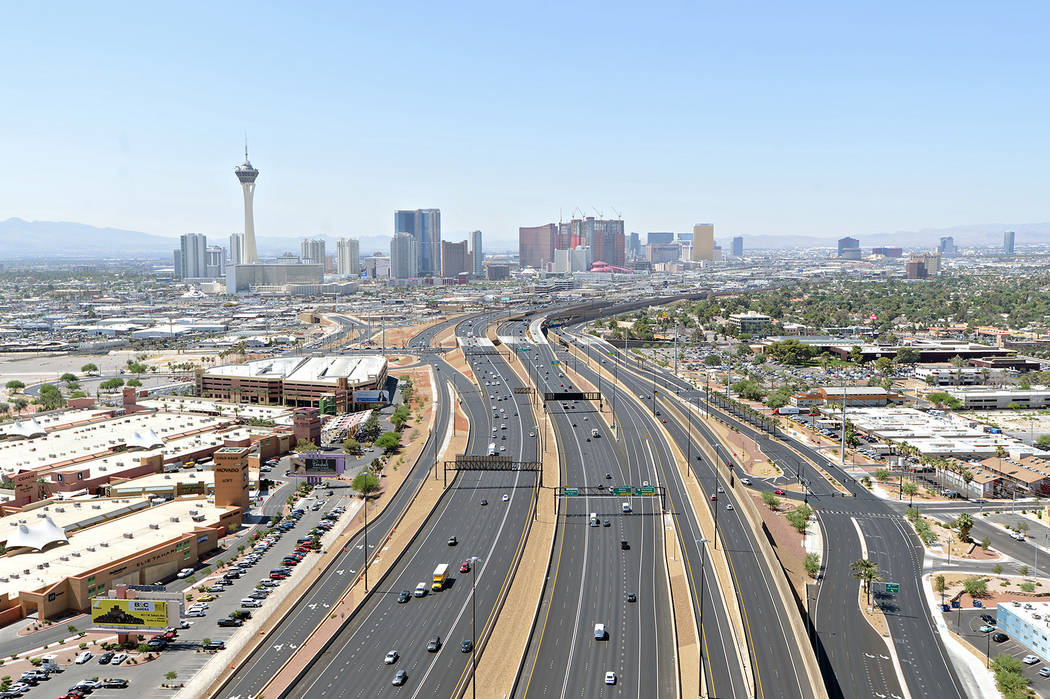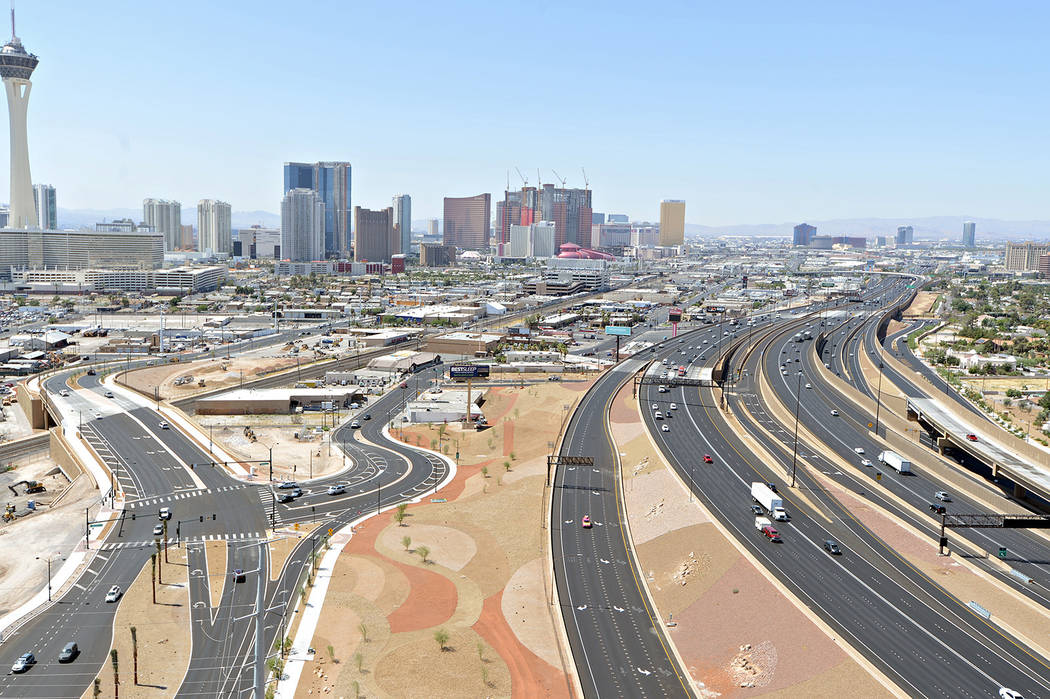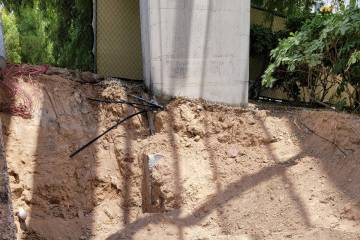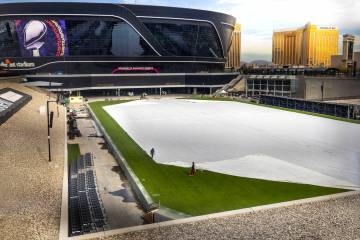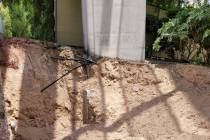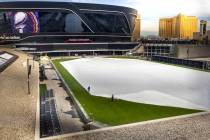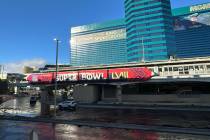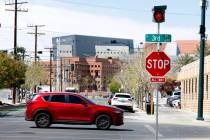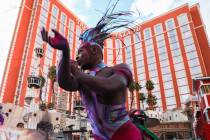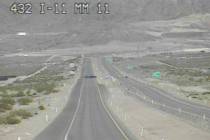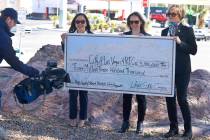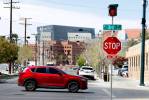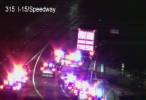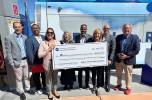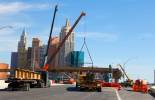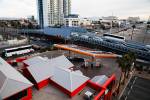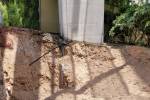Project Neon, now officially done, goes out with a bang in Las Vegas
After more than three years of road closures, lane shifts and traffic jams, the $1 billion Project Neon is officially over.
The Nevada Department of Transportation celebrated Thursday with entertainment, refreshments and dignitaries at a “grand finale” event concluding the largest public works project in state history.
While Project Neon was anything but a party to motorists, it created new access points in downtown Las Vegas and added a much-talked about high-occupancy vehicle lane system.
“They (NDOT) said it’s going to be four years of hell,” said Rep. Dina Titus, D-Nev. “Well it has been, but it hasn’t been four (years), it’s only been three (years), so congratulations for that.”
Project Neon enhanced nearly 4 miles of Interstate 15 between Sahara Avenue and the Spaghetti Bowl. The area is the busiest stretch of highway in Nevada with 300,000 vehicles daily.
The project saw 63 lane miles of new paving, 29 new bridges and 10 miles of drainage improvements. In addition:
—North-south surface street connections were constructed, aimed at reducing congestion and improving access into downtown, Symphony Park, and the medical and arts districts.
—Western Avenue now stretches to Charleston Boulevard where it previously hit a dead end.
—A new bridge allows motorists to take Industrial Road over the Union Pacific railroad tracks between Wyoming Avenue and Charleston Boulevard.
—The Neon Gateway, an area where carpooling motorists can get on-and-off I-15 in the HOV lanes, is also in the area.
“Project Neon reduces travel delays and creates better mobility in downtown Las Vegas,” Las Vegas Mayor Carolyn Goodman said. “It’s so exciting to have the gateway to downtown Las Vegas that it truly deserves to have. Not only a gateway, but several new interchanges and ramps that will ease congestion and deliver visitors and locals to downtown.”
Martin Luther King Boulevard was upgraded for improved north-south operations near I-15, with an expanded Alta Drive intersection and new signalized connection to Wellness Way in the medical district. Additionally, the southbound U.S. Highway 95 offramp to Martin Luther King Boulevard was reconfigured for added lane capacity.
Similarly, the I-15 southbound offramp to Sahara Avenue received more space for westbound travel, and the U.S. Highway 95 southbound offramp to Rancho Drive was also reconfigured for added capacity, thereby reducing freeway backups. And 42 next generation Active Traffic Management freeway signs were installed and are currently undergoing system integration testing.
The dynamic messaging signs allow for traffic flow control, real time speed limit sign changing and more. The signs are still not in service as testing is about to get underway. The signs must run glitch-free for 60 straight days, according to Transportation Department spokesman Tony Illia. It’s expected the system will be fully operational in October, it testing goes as planned.
Kiewit Infrastructure West Co. was the design-build general contractor for the project. All contractual milestones were met or completed ahead of schedule, Illia said. The design-build process allows for work to get underway while plans are still being finalized and for tweaks to be made to the design while work is underway.
“We adopted a design-build approach that delivered the project nearly a year earlier than originally anticipated for nearly $80 million in time savings for local taxpayers,” said Transportation Department Director Kristina Swallow. “This project was a truly collaborative process between stakeholders for improved traffic safety, efficiency and reliability.”
A total of 2.3 million man-hours went into the project, and at peak 600 laborers worked double shifts, six days a week to ensure the job was finished on time. More than 160 pieces of equipment were used for the project.
HOV issues
The portion of Project Neon that’s getting the most attention is the 22 miles of HOV lanes it created between Silverado Ranch Boulevard on I-15 in the south valley and Elkhorn Road off U.S. 95 in the north valley. The lanes are connected at the Spaghetti Bowl via an 81-foot-tall, 2,600-foot-long HOV flyover bridge.
With the new stretch of HOV lanes came new regulations, including 24/7 policing of the lanes, moving away from the peak hour, Monday-Friday regulations that were in place on the U.S. 95 HOV lanes that were opened a decade ago.
The Las Vegas City Council has brought up the carpool lanes multiple times this year at its board meetings, spurred by Councilman Stavros Anthony.
Led by Anthony, the council voted to send a resolution to the state transportation board to end round-the-clock enforcement.
The city also vowed to reduce HOV violation tickets, tabbed at $250, that are assigned to the Las Vegas Municipal Court to parking tickets.
In the first month of regulating the lanes, Nevada Highway Patrol troopers wrote 518 carpool lane violation tickets.



